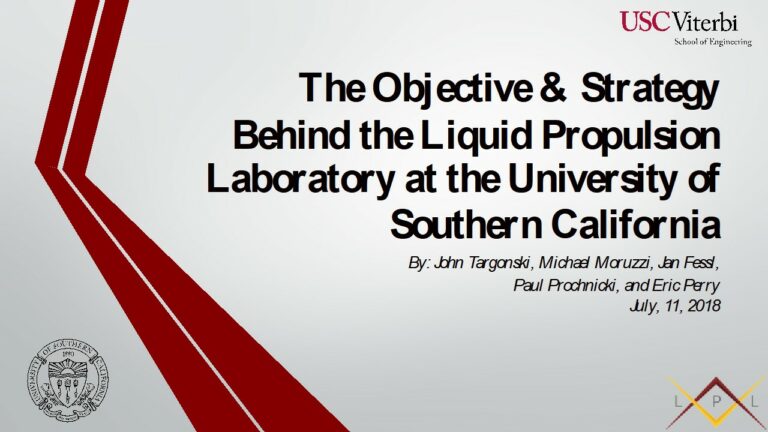History of Liquid Propulsion Lab
The founding of the Liquid Propulsion Laboratories was the product of a few dedicated graduate students interested in developing their own liquid rocket engine. In January 2014, two Master’s students in the Astronautical Engineering Department, Juha Nieminen and Calvin Cheung, along with a friend, Cris Mar, decided to design and develop a nitrous oxide-kerosene engine. This self-funded endeavor took over a year to complete. On April 4th, 2015 they performed a successful static fire with the engine producing 620 newtons of force during its 2.5 second burn.
Adarsh Rajguru, a former member of the Rocket Propulsion Laboratory (RPL) and current NASA JPL engineer took note of this success story and chalked out a future for this project within the Astronautical Engineering Department. From his time at RPL, Adarsh was exposed to a myriad of job placements and believed that the Master’s program could greatly benefit from having a similar laboratory. This would be a place where the students pursuing a Master of Science degree in Astronautical Engineering would be able to apply the coursework toward developing liquid propulsion systems. He then proposed this idea to the Department and in the Fall of 2015, the Liquid Propulsion Laboratory was officially founded.
Our Mission
Liquid propulsion is an extreme technical challenge that features decades-long development programs in the industry. Future engineers will need to tackle and solve progressively more complex problems in order to advance the field of liquid fueled rockets. In the Liquid Propulsion Lab, our main mission is to prepare these engineers for the space industry by designing, building, and testing liquid propulsion technologies through national and international collaboration during their time at USC.



















